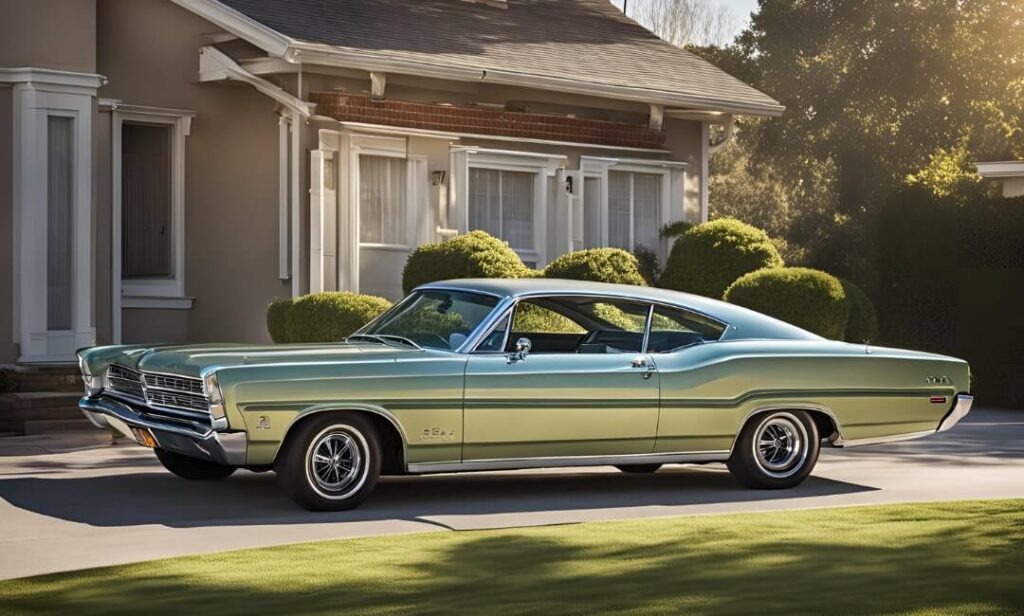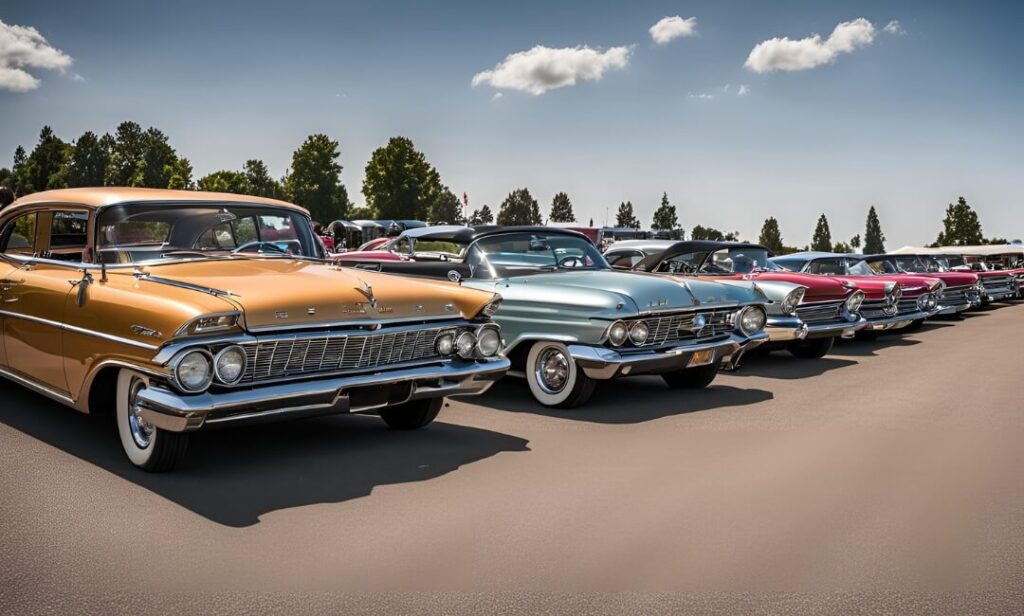The Ford Galaxie 500 fastback was one of the most loved American muscle cars of its era, especially the one that came out in 1968. One of the biggest reasons for its popularity was the variety of engine options and trim levels it offered along with the Fastback.
Muscle car fans were impressed by the elegance and streamlined style the Galaxie carried. The customizability option was a huge attraction for auto lovers. Owners would customize by changing aesthetic elements or performance components.
In this article, we have gathered all the information you need to know about this infamous muscle car. Let’s dig deeper into our 1968 Galaxie 500 Fastback without wasting any more time.
History of Galaxie
Ford had a Fairlane series before the Galaxie was introduced. In that series, the Galaxie was a mere trim level to the Fairlane. Later on, Ford introduced Galaxie as a series of its own in 1960 that lasted till 1974.
The Galaxie 500 Fastback in model year 1968 was a trim level of the Galaxie series, which was appreciated due to the powerful engine options it came along with. The 1968 Galaxie 500 was a classic muscle car that left a lasting impression on the automotive industry and continues to be admired by car enthusiasts to this day.
Key Specifications
The Fastback variant carried a unique, sloping roofline that improved its aerodynamic features and gave it a sporty appearance. It also possessed a “hideaway headlight” feature, a popular and trendy feature during that time.In addition, it came with eye-catching colors and trim packages that drew attention wherever it went.
Dimensions and Exterior
The 1968 Galaxie 500 was available in a couple of variants. You could get a 2-door or 4-door sedan depending upon your choice. There was also an option for a hardtop or a convertible that appealed to many back in the day. The Galaxie 500’s remarkable size enhanced its intimidating appearance:
- Height: 4 feet 8 inches
- Width: 6 feet 7 inches
- Length: 17 feet 6 inches
- Tire Dials: P205/75R14
The 1968 model was basically the same car as the previous year’s model, but it featured a redesigned grille and horizontally oriented headlights. The XL and LTD which were other trim levels along with the 500 Fastback, also adopted the new trend of disguised headlights, while the ‘long hood, short deck’ styling with a more upright roofline and notchback rear was implemented too.
Performance and Engine

In 1968, the Galaxie 500 Fastrack was infamous for its intimidating looks and performance. This car, with its potent V8 engine, was capable of reaching a top speed of 130 mph and accelerating from 0 to 60 mph in around 6-7 seconds. It might not seem much at present, but it was nothing more than a record at that time.
The suspension system of this brawny car was made in such a way that it could easily handle bumps and hurdles on the road and still maintain stability, ensuring a smooth and humble ride. All you needed were the best gear oils for optimal performance.
Engine and Transmission Options
A major factor in the 1968 Galaxie 500 Fastback’s popularity was its engine range. It stood out from other cars of its day mainly for its blend of strength, durability, and convenience of customization. The Galaxie 500 contained potent engine options for the user to choose from according to their liking.
It was also quite simple to work on and modify, which attracted the attention of gearheads who wanted to personalize their vehicle. The Galaxie 500 Fastback offered both automatic and manual transmission. You could choose from 3-speed automatic, 3-speed manual, and 4-speed manual options.
Engine options:
- 240-cubic-inch Big Six: 3.9 Liter engine produced 150 horsepower
- 390 Thunderbird V8: 6.4 Liter engine produced 315 horsepower
- 427 Cobra V8: 7-Liter engine produced 390 horsepower.
Market Value
Classic cars can carry quite a value to them, but only under certain conditions. The Galaxie 500 Fastback is a classic that collectors and enthusiasts are inspired to have. The market value depends on how well-maintained the car is.
Other factors that matter can be, such as the rarity of the model. Cars like the Galaxie 500 are considered to be rare classic cars, which is why the Galaxies are highly desired in today’s time. The market value can also increase if the car has been featured in magazines and shows.
The demand for vintage cars is seemingly increasing. As a result, these vehicles may become more expensive and precious to enthusiasts and collectors.
During the 60’s when the car first came out, the average price of Galaxie 500 fastback ranged from $2000-$3000 depending on the model. In today’s time, the value of this car is somewhere between $8000 and $18,500.
Comparisons With Galaxie’s Earlier Models

The Galaxie lineup was quite popular in the 1960s, with every year seeing a release. However, the 1968 Galaxie 500 Fastback trim seemed to have always stood out and been preferred the most by the buyers.
The 500 Fastback from the model year 1968 is better than its predecessors in more than one way. Below we have a comparison that will give you a clear idea.
- 1963: Although the Galaxie series first started in 1960, the first Galaxie 500 was introduced in 1963. This car was the reason for Ford’s increase in sales; around 648,010 were produced. The Galaxie offered three engines across the lineup producing 220 to 405 horsepower range.
- 1964: Ford did not put much effort into changing the Galaxie lineup’s appearances over the years, but the 1964 Galaxie 500 Fastback did include styling fins presented on their sides and chrome wheels. This year’s model also offered three engine options, but the one that stood out was the R-code V8 engine that produced over 425 horsepower.
- 1965: The 1965 Galaxie 500 Fastback had only slight changes to its exterior that gave it a more elegant and clean look. Ford introduced the high-performance 427 cubic-inch V8 engine, which left many muscle car fans amused. The engine was able to provide approximately 425 horsepower.
- 1966: The 1966 model continued with the same appearance only with minor changes such as a different grille and newly designed rear taillights. The newer edition to the hood was the “teardrop” design which Ford decided to implement on the hood to increase the height due to the engine. The engine that was included was a 428 cubic inch (7.0 L) Thunderbird V8 that produced around 345 horsepower.
- 1967: This year’s model only had a few changes, such as the safety side marker lights and shoulder belts. It carried a 4.9-liter 302 cubic inch that only produced 230 horsepower. Additionally, the 427hp V8 engine was available at an extra cost.
Top Competitors Of The Galaxie 500 Fastback
The Galaxie 500 Fastback is one of the most acknowledged muscle cars that had to face tough competition in the 1960s. A lot of the other muscle cars would often have the same look and features, which made it difficult to distinguish. The only difference between these cars would be their performance outputs.
Chevrolet, Dodge, and Ford have always been rivals to each other since their vintage days and still are to this date. In the 1960s, the Chevrolet Impala and Dodge Polara were the biggest competitors to the Galaxie. Let’s have a look at their comparisons.
- Chevrolet Impala: One of the biggest rivals of the Galaxie was the Chevrolet Impala, with a very familiar appearance including the grille, headlights, and shape. The Impala carried a powerful V8 engine that produced over 350 horsepower.
- Dodge Polara: In terms of looks, the Dodge Polara did have a slightly different appearance compared to the Galaxie. It had a more aggressive look along with fins. Although the Polara had a V8 engine, it could only supply around 300 horsepower.
Related FAQs
Q1. Are Fairlane and Galaxie the same?
In earlier models, Ford had a Fairlane car series, in which the Galaxie was only a trim level of the Fairlane. In 1960, Ford decided to launch the Galaxie as an individual car of its own series along with trim levels.
Ford introduced the Galaxie with a bigger body and different suspensions, including the front and back.
Q2. Is Galaxie 500 still available?
The Galaxies are one of the most wanted muscle cars for collectors or vintage car lovers. The production of the Galaxie 500 stopped in 1974 as it was the last year for its name.
Although Ford may have stopped the production of the Galaxies, they can still be bought in second hands from people who still own them and are willing to sell them.
Q3. Why was the Galaxie 500 Fastback so popular in 1968?
The Galaxie 500 Fastback was popular in 1968 for various reasons, such as the number of powerful V8 engine options it provided along with a classy style and comfort.
Another thing that customers loved was that it could easily be upgraded with a Hotchkis sport suspension, Wilwood six-piston front brakes, and more. The Galaxie even had a fun-attracting feature known as the “hidden headlights,” where headlights were arranged horizontally.
Q4. What other muscle cars were available in the 60s along with Galaxie?
Even though the Ford Galaxie was highly liked in the 1960s, there were still other options for muscle cars. Starting off with Ford itself, there were other muscle cars that Ford launched along with the Galaxies such as, the Mustang Boss 429 and Torino Tallade.
Other brands also produced muscle cars such as the Pontiac GTO, Dodge Challenger, Plymouth Barracuda, Chevrolet Impala, Dodge Polara, and Oldsmobile 442.
Q5. What made the late ’60s Galaxies so smooth?
There is not much to what Ford did in order to make the Galaxies a smooth drive. The engineers at Ford made a few tweaks here and there. They made the changes by stiffening the suspension, removing the leaf springs, and adding a three-link suspension system.
The rest of the body had vibration and shock rubber mounts to reduce the body from bouncing and ensure a smooth ride.
Conclusion
The 1968 Galaxie 500 Fastback was a widely loved car as it was part of the full-size car category, which was exciting during the late 1960s. It came along with impressive engine options that produced an ample amount of horsepower, making it attractive to those who valued speed and power.
Regardless of your interest in antique cars—collector, enthusiast, or just plain inquisitive—the Galaxie 500 Fastback continues to be an important part of American history.

